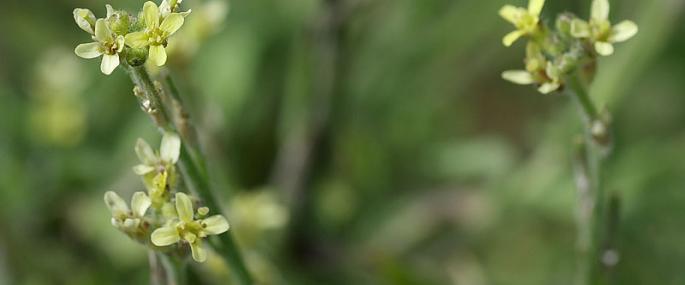2011-05-05 13:03
Scientific Name:
Sisymbrium officinale
Loved by caterpillars, Hedge Mustard grows in hedgerows, on roadside verges and on waste ground, preferring disturbed ground. Small yellow flowers appear from May to October and tangled, wiry stems.
How to identify:
Hedge Mustard grows in a loose, candelabra-like shape. The leaves at the bottom of Hedge Mustard plants grow in a rosette shape, while those further up the stem are narrower. The flowers are small and yellow and grow at the tip of tough stems.
Where to find it:
Common throughout the UK, although not in the far north of Scotland.
How people can help:
Although they sometimes don't look especially wildlife-friendly, our roadside verges, field edges and waste grounds can provide valuable habitats for all kinds of plants and animals. The Wildlife Trusts get involved in different projects to help make these places as beneficial for wildlife as possible. We have a vision of a 'Living Landscape': a network of habitats and wildlife corridors across town and country, which are good for both wildlife and people. You can support this greener vision for the future by joining your local Wildlife Trust.
Statistics:
Height: up to 1m
Conservation status:
Common.
Did you know?:
The ancient Greeks believed that Hedge Mustard was an antidote to all poisons. Nowadays, its edible leaves and seeds are used in salads in Europe, but it's White Mustard and Black Mustard that tend to be cultivated to make popular condiments from their seeds.
Seasons:
Spring
Summer
Autumn
Image:
